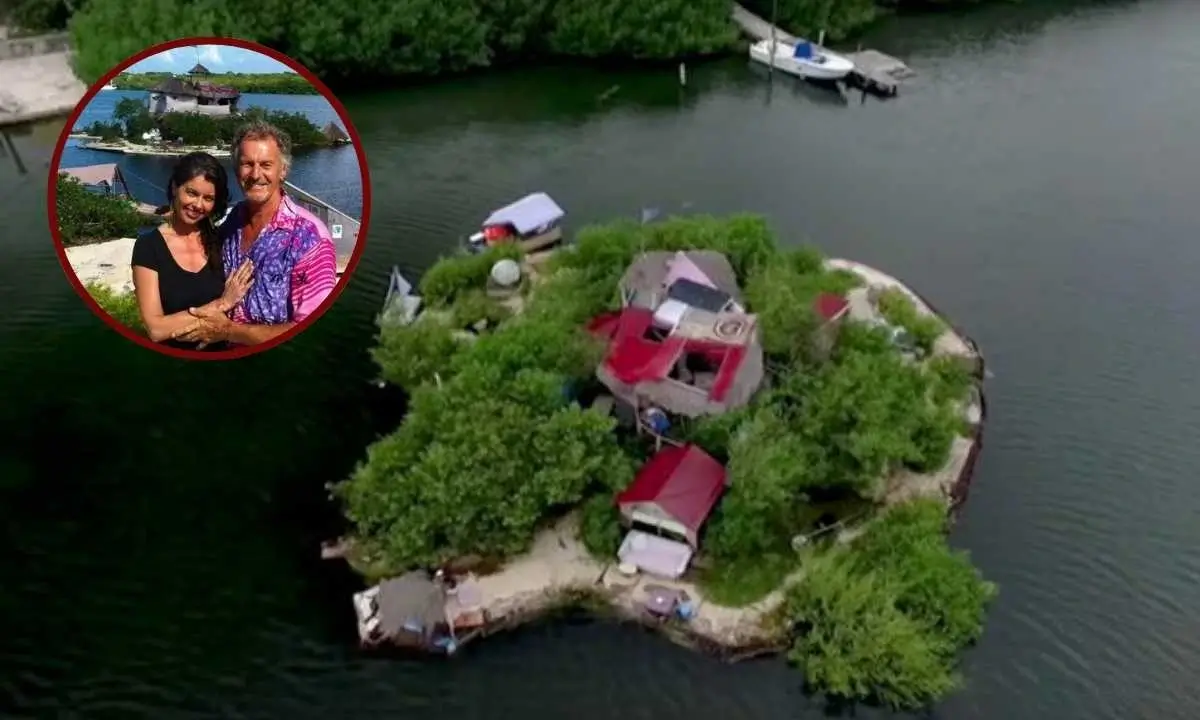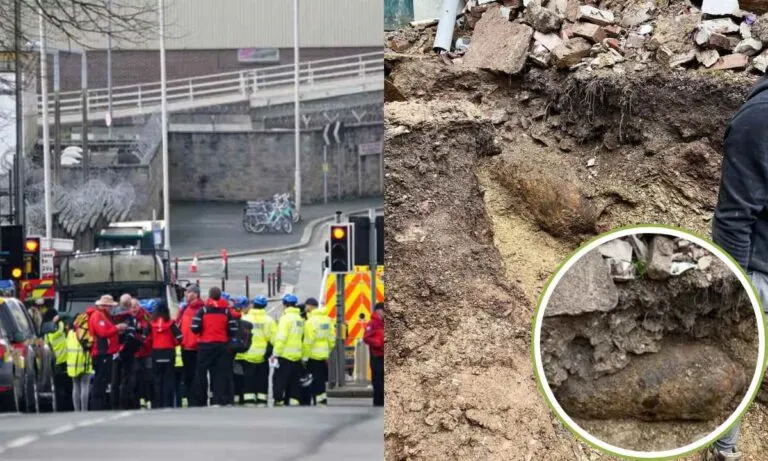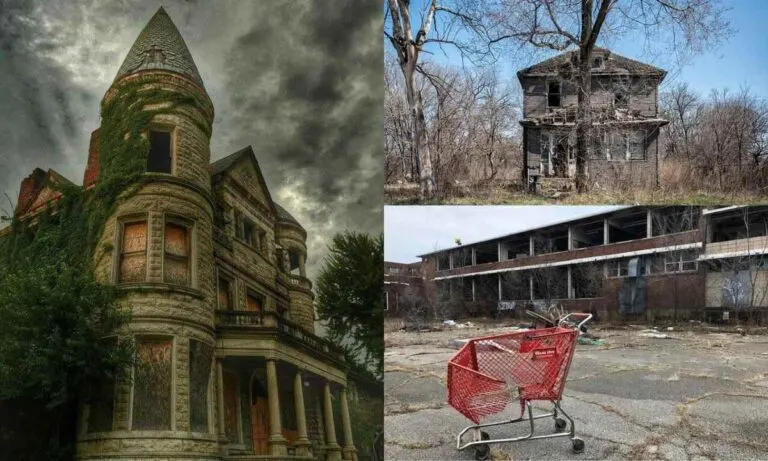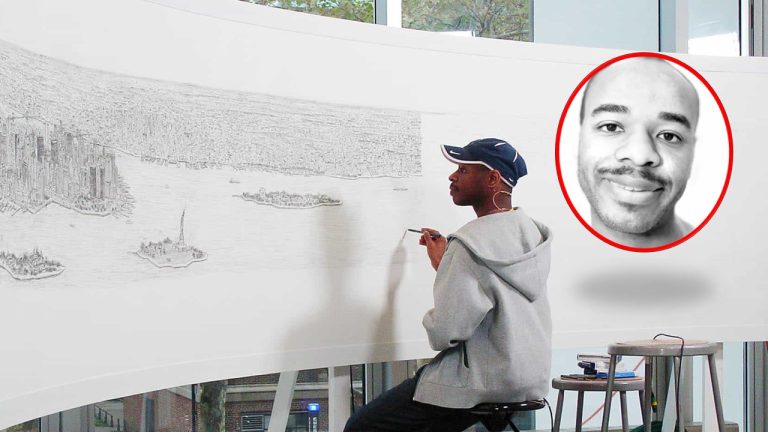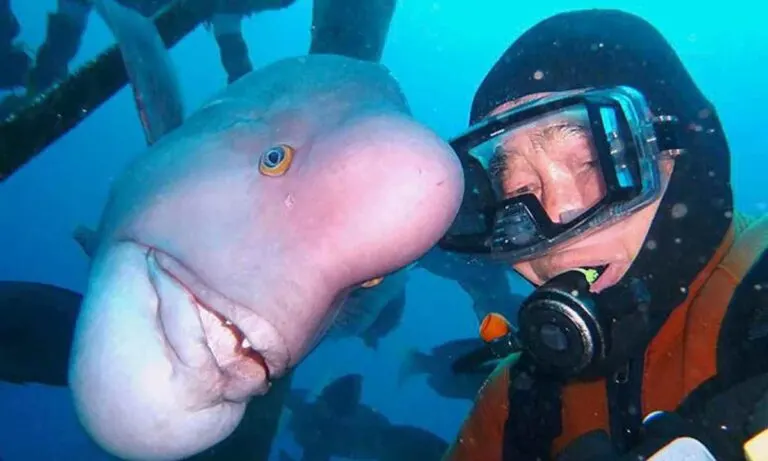A Man Builds His Own Floating Island With 250,000 Plastic Bottles!
In the late 1990s, an ambitious project began taking shape off the coast of Cancun, Mexico. Richart “Rishi” Sowa, is a man with a vision for sustainability. He set out to build a floating island entirely from recycled materials, primarily plastic bottles. Richart filled plastic mesh bags by using over 250,000 plastic bottles to cover the surface. He also used wooden platforms and sand to keep the surface stable. The island which was later known as ‘Spiral Island.’ But it was not his only attempt. He built another called “Joysxee Island” after his work with the Spiral Island came to an end. Let’s dive in for the details of his ingenious creation and what is life like on the island.
How The Man Builds His Own Floating Island
Richart Sowa’s project began as a response to the growing environmental issue of plastic waste. In the 1990s, Sowa had relocated from England to Mexico, where he started collecting plastic bottles—millions of them, discarded on beaches and streets in the region. His idea was simple but revolutionary: to use the flexible properties of plastic bottles as the foundation for a floating island.
He packed these bottles into mesh bags and bound them tightly to create a large, buoyant base. This base served as the platform for his island.
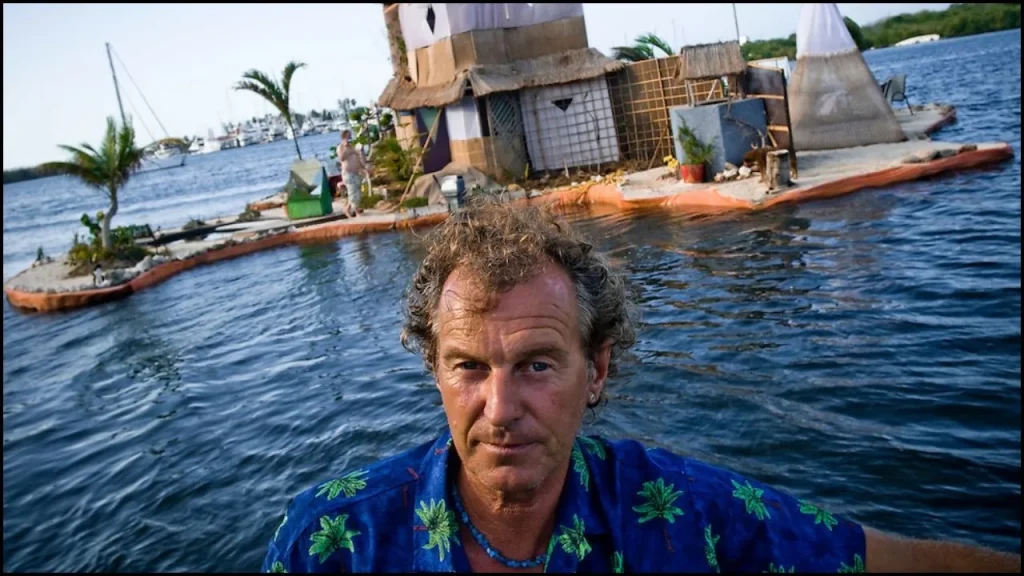
“Each bottle is a small floatation device, and with enough of them tied together, they can hold up significant weight.”
Richart Sowa
The first version of Spiral Island took shape in 1998. Once the foundation of the bottles was assembled, Sowa layered bamboo, plywood, and soil on top to create a solid surface. He planted various trees, including mangroves, which were crucial in holding the soil together and providing additional structural stability. The mangroves’ roots grew through the soil and intertwined with the mesh bags, further anchoring the island.
By the early 2000s, the island had grown to approximately 66 feet in diameter. It was built to be self-sustaining, utilizing only recycled materials. Sowa’s goal was to show that plastic waste, which typically damages ecosystems, could be used to create something functional and environmentally friendly.
“We are drowning in plastic waste, But I want to prove that we can reuse it and create something amazing.”
Richart Sowa said during an interview in 2003
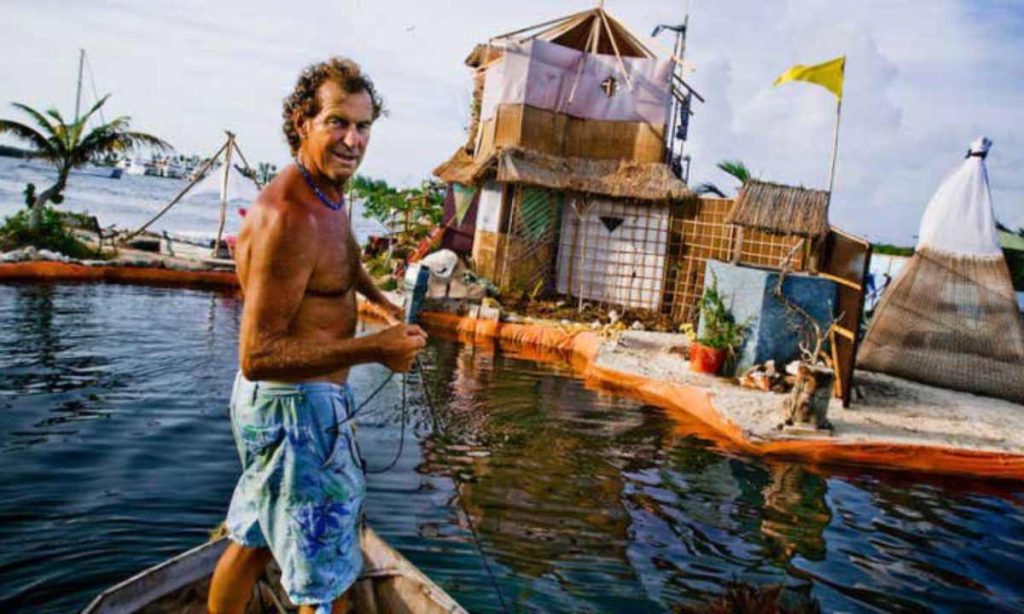
What the Island Had
Spiral Island was more than just a floating pile of plastic bottles. It was a living space, equipped with several features that made it not only habitable but also self-sufficient. Sowa lived on the island for several years, constructing a small hut from reclaimed wood and other salvaged materials. This simple dwelling was his home, and he equipped it with basic amenities, including solar panels to power essential devices.
A key feature of Spiral Island was its rainwater collection system. Sowa designed it to capture and filter rainwater, ensuring a steady supply of fresh water for drinking and other uses. Additionally, the island had a composting toilet, which helped reduce waste while also providing compost to nourish the plants growing on the island.
Sowa’s island also included a small garden, where he grew various fruits and vegetables. By planting a mix of edible plants and native species, he was able to sustain himself with minimal reliance on mainland resources. The mangroves he planted around the perimeter of the island helped filter and clean the water, creating a miniature ecosystem that supported wildlife such as fish and birds.
In one of his interviews, Sowa said, “The island is a work in progress. It’s constantly evolving, but everything here serves a purpose, from the bottles to the trees. It’s all interconnected.”
As the island developed, it began attracting attention from the local community and the global media. People were curious about how Sowa had created this floating paradise and how it continued to function. By 2004, Spiral Island had become a local attraction, drawing visitors who wanted to see firsthand how someone could turn plastic waste into a functional habitat.
The Demise of Spiral Island
The man who built his island also emphasized that the island’s flexibility was an essential feature. It allowed the structure to float freely with the water currents. The island was anchored in shallow water near Cancun, and because of the design, the entire structure could rise and fall with the tide.
Although Spiral Island was a successful experiment in many ways, it was not immune to the forces of nature. In 2005, the island met its tragic end when Hurricane Emily hit the Caribbean region. The hurricane’s high winds and powerful waves tore apart the structure, scattering the plastic bottles and other materials across the ocean. The island, which had become a symbol of sustainable living, was destroyed in a matter of hours.
“I was devastated. Years of hard work and careful planning, gone in one day.”
Sowa recalled in an interview after the storm.
Despite the destruction of his first island, Sowa was not deterred. The loss of Spiral Island only motivated him to try again. He immediately began working on a new project, which would eventually become Joysxee Island.
“I was devastated, Years of hard work and careful planning, gone in one day.”
Richart Sowa
The Creation of Joysxee Island
In 2007, Sowa started building his second floating island, named Joysxee Island, using many of the same principles that guided the construction of Spiral Island but with several improvements. The new island, which floated in the Laguna Macax near Isla Mujeres, Mexico, was larger and stronger than its predecessor, measuring around 82 feet in diameter. Sowa used more plastic bottles—around 250,000—and reinforced the structure to make it more resilient against natural disasters.
Joysxee Island incorporated several features that Spiral Island had, including a small house, solar panels, a rainwater collection system, and composting toilets. However, Sowa took his efforts a step further with Joysxee. He added a wind turbine to help generate additional power, making the island even more energy-efficient.
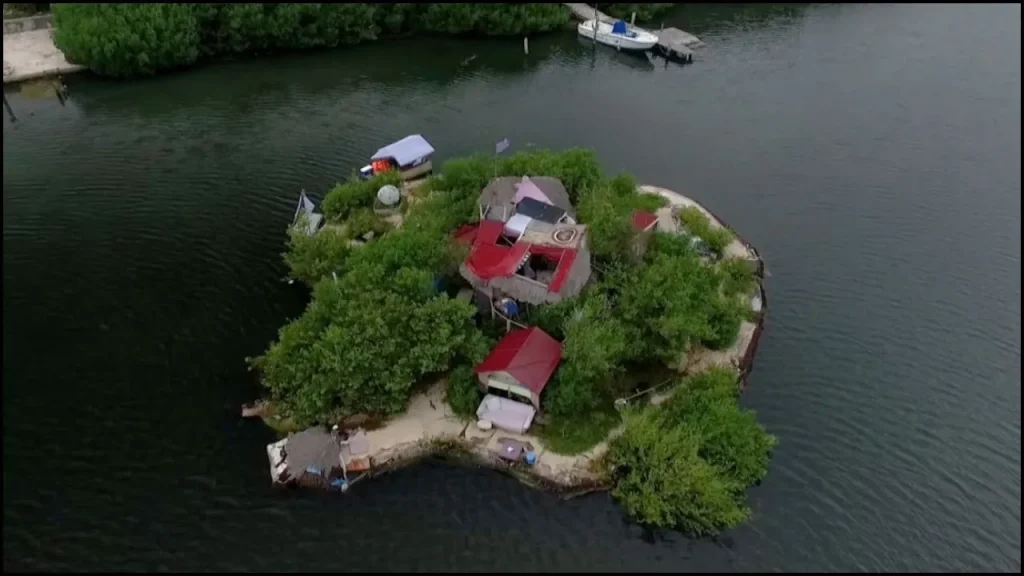
One of the most innovative aspects of Joysxee Island was the way Sowa integrated the natural environment into the design. The island was surrounded by mangroves, which provided stability and helped create a healthy marine environment around the structure. The island also featured a larger garden, where Sowa grew more fruits and vegetables. He continued to live on the island and opened it up to visitors, giving tours and educating them on sustainable living practices.
Sowa’s work attracted attention from tourists, environmentalists, and media outlets around the world. The floating island became a symbol of eco-friendly innovation. “I want Joysxee to inspire others to think about how they can use waste more wisely,” Sowa said during one of his tours. “If I can build an island from trash, imagine what we could do if we put more effort into reusing what we throw away.”
The Fate of Joysxee Island and Richard Sowa
Although Joysxee Island was more resilient than Spiral Island, it still faced challenges. Over time, the bottles and other materials began to degrade, and maintaining the island became increasingly difficult. Local authorities raised concerns about the safety of the structure, and in 2018, they ordered Sowa to vacate the island due to safety risks associated with the deteriorating plastic foundation.
Sowa eventually left Joysxee Island and moved back to the mainland. Although the island still exists in some form, it is no longer inhabited and has fallen into disrepair. Despite the challenges and setbacks, Sowa remains committed to environmentalism and continues to advocate for recycling and sustainable living.
“Building these islands was about more than just making a place to live. It was about sending a message. I hope people can see the potential of reusing waste and how important it is to care for our planet.“
Reflecting on his journey, Sowa noted.
Conclusion
Richard Sowa’s floating islands—Spiral Island and Joysxee Island—represent a fascinating experiment in sustainable living and environmental activism. Through hard work and creativity, Sowa built these islands using 250,000 plastic bottles and other recycled materials, demonstrating the potential of turning waste into a resource. Although neither island exists in its original form today, Sowa’s message about sustainability and resourcefulness continues to inspire people around the world. His work reminds us of the potential to rethink how we use and discard materials and how individual efforts can spark wider conversations about environmental responsibility.
Also Read:
KSI Faces Backlash from Fans After Calling DanTDM a ‘Hypocrite’ in the Lunchly Controversy
World’s Largest Leatherback Sea Turtle with Scissor-Like Jaws Weighs Over a Ton!

